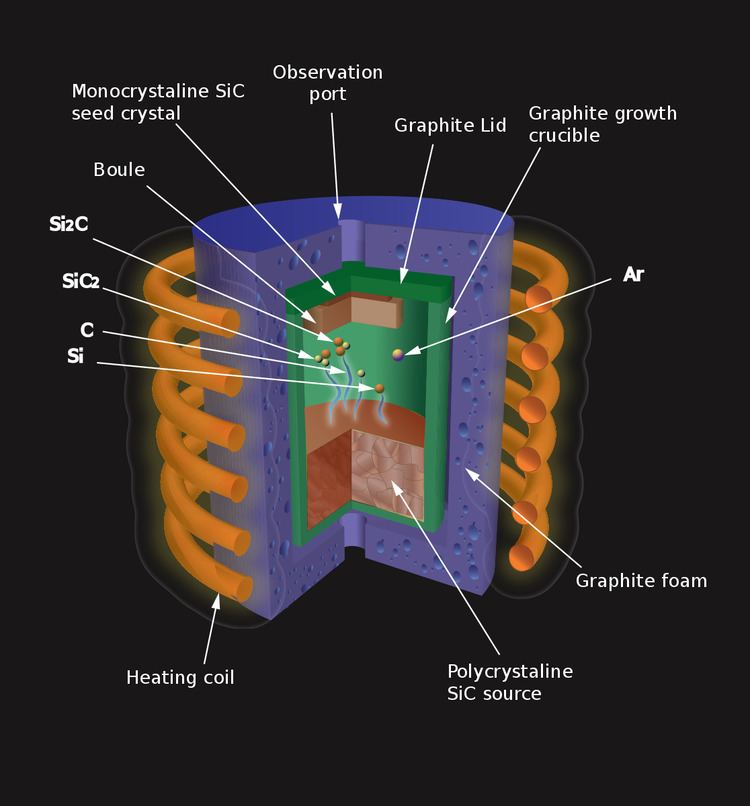 | ||
The sublimation sandwich method (also called the sublimation sandwich process and the sublimation sandwich technique) is a kind of physical vapor deposition used for creating man-made crystals. Silicon carbide is the most common crystal grown this way, though others crystals may also created with it (notably gallium nitride).
In this method, the environment around a single crystal or a polycrystaline plate is filled with vapor heated to between 1600°C and 2100°C-- changes to this environment can affect the gas phase stoichiometry. The source-to-crystal distance is kept between 0.02-0.03mm (very low). Parameters that can affect crystal growth include source-to-substrate distance, temperature gradient, and the presence of tantalum for gathering excess carbon. High growth rates are the result of small source-to-seed distances combined with a large heat flux onto a small amount of source material with no more than a moderate temperature difference between the substrate and the source (0.5-10°C). The growth of large boules, however, remains quite difficult using this method, and it is better suited to the creation of epitaxial films with uniform polytype structures. Ultimately, samples with a thickness of up to 500µm can be produced using this method.
